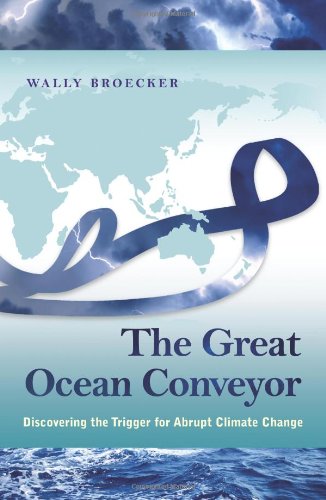“Watermelons”, by James Delingpole, is a major broadside against the acceptance of anthropogenic, in other words, human-influenced, global warming, otherwise known as AGW.
As an alumni not only of UCL’s Climate Research Group, indeed a founder member, but also of the British Antarctic Survey, de facto I would not be expected to align myself with the sceptics and deniers of AGW. Even worse, my University research work was on physical and computer modelling of vertical-axis wind turbines. Delingpole is not big on wind energy. But if my science background has taught me anything, it is to consider all aspects of an issue, so I was genuinely interested to see what Delingpole had to say. And according to Amazon reviews he’s an entertaining writer. So why not?
I decided not to read any further reviews - most on Amazon are pure hagiography anyway - but to make up my own mind.

I have to confess I’d never heard of James Delingpole. I haven’t really followed the AGW sideshow of warmists and deniers, and I’ve got very little patience for the question “do you believe in global warming?”. Belief doesn’t come into it. On this topic I base my views on proven facts and well reasoned hypotheses. And on those grounds, frankly, I lean towards the “insufficient data” response so far. As does a good proportion of the scientific community. But this leads us to the crux of the problem: many people, including most journalists and all politicians, cannot deal with anything beyond “yes” or “no”. Or what a man in the pub told them the other day. James Delingpole is less complicated: he can’t deal with “yes” either.
“Watermelons” actually makes several very valid points. Principal amongst these is pointing out the scale of the industry that has grown up from the AGW theory, or “threat”, and that fact that it could be very awkward for a lot of very large vested interests if AGW were to be disproved. He also, correctly in my view, exposes the excesses of the large eco NGOs such as Greenpeace, WWF and Friends of the Earth who have long since abandoned their grass roots calling and turned into massive global corporations. But then he calls out the motives of the Greens, claiming that it’s all a global sinister conspiracy to destroy the capitalist growth economy and dismantle civilisation. Hmm. Well, how does that square with the aforementioned NGOs becomming the epitomy of capitalistic achievement? Again, it’s not a simple case of black and white.
And this runs all through the book. It thrives on polarities, on stereotyping, on tarring all with the same brush. All it takes is one scientist to be found - alledgedly - tampering with the evidence, and then all scientists are “liars”. I don’t particularly want to rehash the ins & outs of Climategate, but one particular stolen email is held up as evidence of extreme evil:
“I’ve just completed Mike’s Nature trick of adding in the real temps to each series for the last twenty years (i.e. from 1981 onwards) and from 1961 for Keith’s to hide the decline”
Anybody with any passing familiarity with research work will see little wrong here. Perhaps if we substitute “trick” with “technique”, and realise that Nature is the most prestigious and tightly reviewed science journal around, then it becomes clear that the first part refers to a well accepted adjustment to account for known distortions. Same for the second part, this referring to the extremely well documented fact that tree ring count data needs to be treated carefully for recent years. This, in an email which was never intended for any other than close colleagues who understand the shorthand and can read between the lines. This is not evidence of any kind of fraud. And worse, I don’t doubt that Delingpole knows this.
That some scientists did a deal with the devil by exaggerating some of their predictions in order to encourage funding, that some politicians saw a fantastic vote-grabbing potential in a dumbed down version of these predictions, and that a whole bunch of entrepreneurs, bureaucrats and career Greenies then jumped on board, well this is none other than the capitalist growth economy, which the author defends tooth and nail, hard at work.
There is little real addressing of the science in the book. It is dismissed as a new religion, with climate scientists as its high priests. Actually, I note that in his blog Delingpole refers to them as climate “scientists”, presumably because they don’t do real science. When he does mention science, it’s usually to dismiss the “hockey stick” graph of accelerated warming yet again, with the usual fallacies, or to come up with claims like Arctic sea ice only recedes in the summer but freezes again in the winter, or that the Northwest passage was perfectly navigable a century ago,since Amundsen sailed through it. What he fails to mention is that it took Amundsen 3 years, wintering over twice in sea ice. On the other hand, this year, a normal sailboat, with an experienced skipper, can just sail straight through.
The old chestnut of the Medieval Warming Period (MWP) comes up a lot too, as “proof” that AGW doesn’t exist. What he seems unable, or unwilling, to grasp is that likely natural drivers for the MWP are reasonably well established, and that climate variation, both global and local, on all sorts of timescales, is well accepted. AGW theories concern themselves with modification of the natural variability due to human activity, largely due to carbon dioxide (not “carbon”) emissions. Still, in respectable scientific circles the jury remains out on the real impact. But as mentioned before, expressing reasonable doubt isn’t good for funding.
But in a sense it doesn’t matter. Delingpole claims it’s not about the science, and anyway that he is not a scientist. Rather, it’s about massive scale misrepresentation. Which is all very well, but it doesn’t give him an open license to misrepresent in turn.
Frequently I started to get the impression of some incipient eye-swivelling as Delingpole ranted on about one or other of his more far-fetched conspiracy theories or character assassinations, but most of the time he pulls back from the brink just in time. However, he goes way beyond the acceptable in his treatment of Michael Mann, and his characterisation of Rachel Carson, the author of “Silent Spring” as a “mass-murderer” is unforgivable. His description of pretty much everybody on the opposing side of his arguments as “Nazis” is also a little tiring.
But despite this, I do find myself in agreement with him on some of his specific criticisms of bodies like the IPCC, and some instances of scientists overstepping the mark. I also share his dislike of the extreme end of the Green movement. But the general tone of the book is of a foaming-at-the-mouth, sub Jeremy Clarkson rant, preaching to his followers and making no attempt at reasoned dialogue. In this he lets himself down. AGW has been used and abused by far too many agenda-owning special interests, and there are tales there that deserve to be told. But wrapping it up in a vitriolic and very largely unjustified attack on dedicated working scientists is not the way to go about.
I approached “Watermelons” with an open mind, I read it right to the end, and I even found myself nodding in agreement more often than I might have expected. But my remaining impression is of a foul mouthed attention-seeking little boy screaming “ITS NOT FAIR!!!”. A balanced debate on AGW is urgently needed, but “Watermelons”, sadly, is as unbalanced as it gets.


